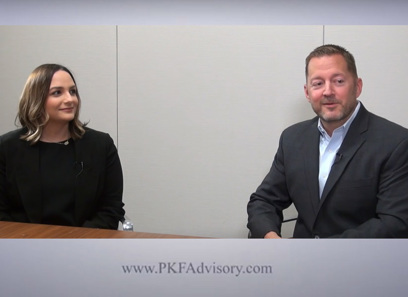M&A Outlook: How Emerging Market Opportunities Are Rewriting the Rules of Mergers and Acquisitions
M&A Outlook: How Emerging Market Opportunities Are Rewriting the Rules of Mergers and Acquisitions
Blog Article
Checking Out the Lawful and Financial Facets of Mergers and Acquisitions Transactions

Overview of Mergers and Acquisitions
Mergers and acquisitions (M&A) represent a significant section of company approach, with plenty of purchases taking place globally each year. These strategic maneuvers are primarily targeted at enhancing affordable benefit, increasing market share, and attaining functional synergies. M&An activities generally come under two distinctive groups: mergings, where 2 business combine to develop a new entity, and acquisitions, where one firm acquisitions one more, thus maintaining its identification.
The inspirations behind M&A deals are varied. Business might pursue these approaches to diversify their product offerings, get in new markets, or leverage technological advancements (Economic factors influencing M&A). Additionally, M&A can function as a way to get rid of competitors or access to important copyright
The procedure of M&An involves numerous stages, including target recognition, settlement, valuation, and assimilation. Successful transactions call for complete due persistance to assess economic health, operational capabilities, and prospective responsibilities of the target business. Furthermore, cultural placement between merging entities plays a vital role in making certain a smooth transition and long-lasting success. As services navigate the complexities of M&A, recognizing the potential difficulties and critical imperatives is essential for achieving wanted end results in an increasingly competitive landscape.
Lawful Framework and Compliance
Understanding the lawful structure and conformity needs bordering acquisitions and mergings is crucial for browsing the complexities of these deals - Economic factors influencing M&A. These procedures are governed by a myriad of laws at both government and state levels, which aim to ensure reasonable competition, protect stakeholders, and support business governance criteria
Secret regulatory bodies, such as the Federal Profession Payment (FTC) and the Stocks and Exchange Payment (SEC), impose antitrust laws and securities laws, respectively. Business need to conduct thorough due persistance to identify any kind of prospective lawful challenges, including regulatory authorizations or anti-competitive concerns essential for a successful purchase.
Furthermore, conformity with disclosure responsibilities is critical, especially when public companies are included. This consists of filing called for paperwork and giving precise details to shareholders and regulative authorities.
Cross-border M&A purchases introduce extra layers of intricacy, as varying lawful standards and regulative structures need to be navigated. Involving legal counsel with knowledge in mergers and acquisitions is essential to ensure adherence to applicable regulations and to mitigate threats. Hence, comprehending these legal frameworks not only promotes compliance but likewise improves the chance of a successful and efficient merger or purchase.
Financial Appraisal Methods

Among the most usual techniques are the Reduced Capital (DCF) analysis, which approximates today value of predicted future cash flows, and the Similar Firm Analysis (CCA), which assesses a business's worth family member to comparable companies within the same market (Economic factors influencing M&A). Furthermore, Criterion Transactions Analysis (PTA) analyzes historic acquisition data to develop standards for evaluation
Another significant technique is the Asset-Based Assessment, which concentrates on the business's web asset value, providing a concrete evaluation of worth by thinking about both long-lasting and existing liabilities and assets. Each technique has its limitations and strengths, usually differing in applicability depending on the nature of the business and the industry context.
Inevitably, using a mix of these monetary assessment methods can produce an extensive understanding of a company's value, aiding to make certain that both purchasers and sellers engage in equitable and fair purchases throughout the elaborate process of mergers and acquisitions.
Due Persistance Refine
Conducting comprehensive due persistance is necessary to revealing vital info about a target firm prior to finalizing a merger or acquisition. This procedure includes a thorough testimonial of the target's financial, operational, legal, and regulatory aspects. The key goal is to determine potential threats and liabilities that might impact the purchase's value or post-merger efficiency.

In addition, cultural due diligence reviews the compatibility of the combining entities' business cultures, which is crucial for an effective combination. The due diligence procedure calls for partnership among numerous stakeholders, including legal advise, monetary advisors, and sector specialists, to guarantee an all natural understanding of the target business.
Ultimately, the searchings for from due diligence educate settlement strategies and might result in adjustments in the purchase cost or terms, thereby guarding the rate of interests of the acquiring celebration and laying the groundwork for an effective merger or procurement.
Post-Merger Combination Obstacles
While successful mergings and procurements frequently produce substantial synergies and growth chances, the post-merger assimilation phase provides a myriad of difficulties that can threaten these advantages. One of the foremost issues is the social assimilation of the merging entities.
One more substantial challenge hinges on straightening systems and processes. The assimilation of diverse IT systems, functional methods, and monetary coverage can be lengthy and complicated, usually leading to operational interruptions. Furthermore, the failure to interact successfully throughout this phase can lead to confusion and misinformation amongst stakeholders, clients, and workers.
Financial combination likewise positions challenges, particularly in reconciling economic plans and accountancy methods. This misalignment can result in disparities in financial coverage, influencing stakeholder confidence and market perception.
Last but not least, regulative compliance issues may emerge, necessitating precise interest to legal demands. Resolving Mergers and Acquisitions these difficulties quickly and strategically is important for realizing the anticipated advantages of a merger or procurement, making sure long-term success and security.
Verdict
In final thought, the complex landscape of procurements and mergings demands a thorough understanding of both legal and financial aspects. Adherence to regulatory structures ensures conformity and minimizes anti-competitive threats, while durable economic evaluation strategies give essential understandings right into business worth.
The intricate landscape of procurements and mergings deals necessitates an extensive understanding of both legal structures and economic assessment approaches. Regulatory bodies, such as the FTC and SEC, enforce rigid compliance requirements to safeguard versus anti-competitive habits, while robust economic evaluation methods are important for properly examining a business's value. Effective deals require extensive due diligence to analyze monetary wellness, functional abilities, and prospective liabilities of the target company.Financial due persistance checks out historical and projected financial declarations, cash circulation evaluation, and tax conformity. Adherence to regulative frameworks ensures conformity and reduces anti-competitive risks, while durable financial evaluation methods provide important insights right into company worth.
Report this page